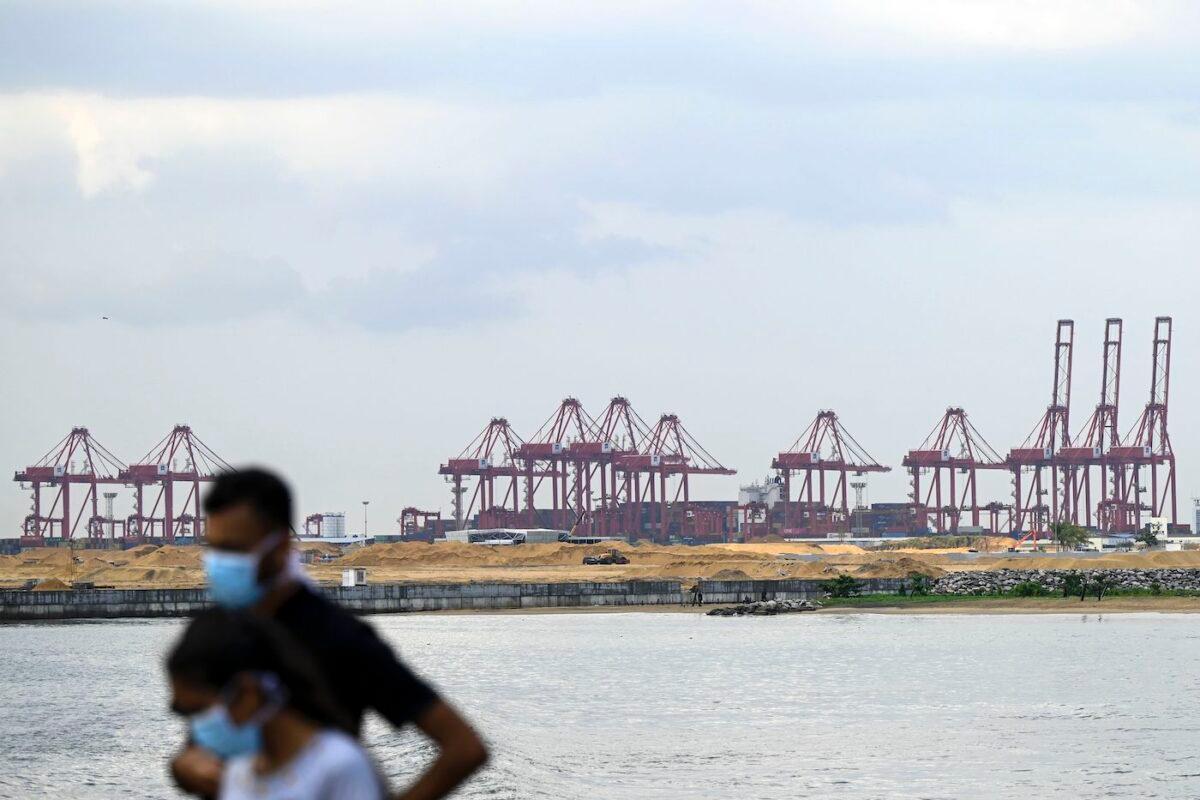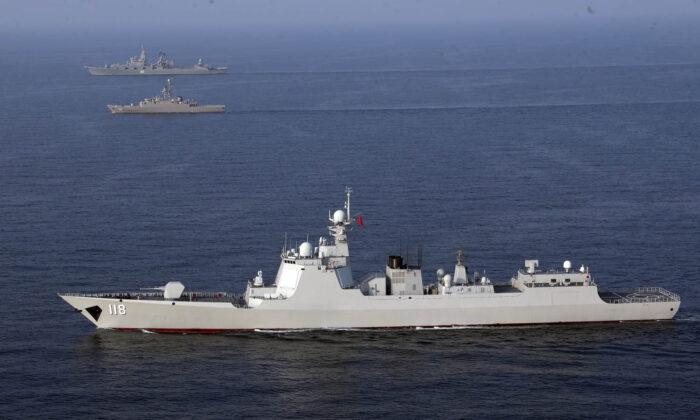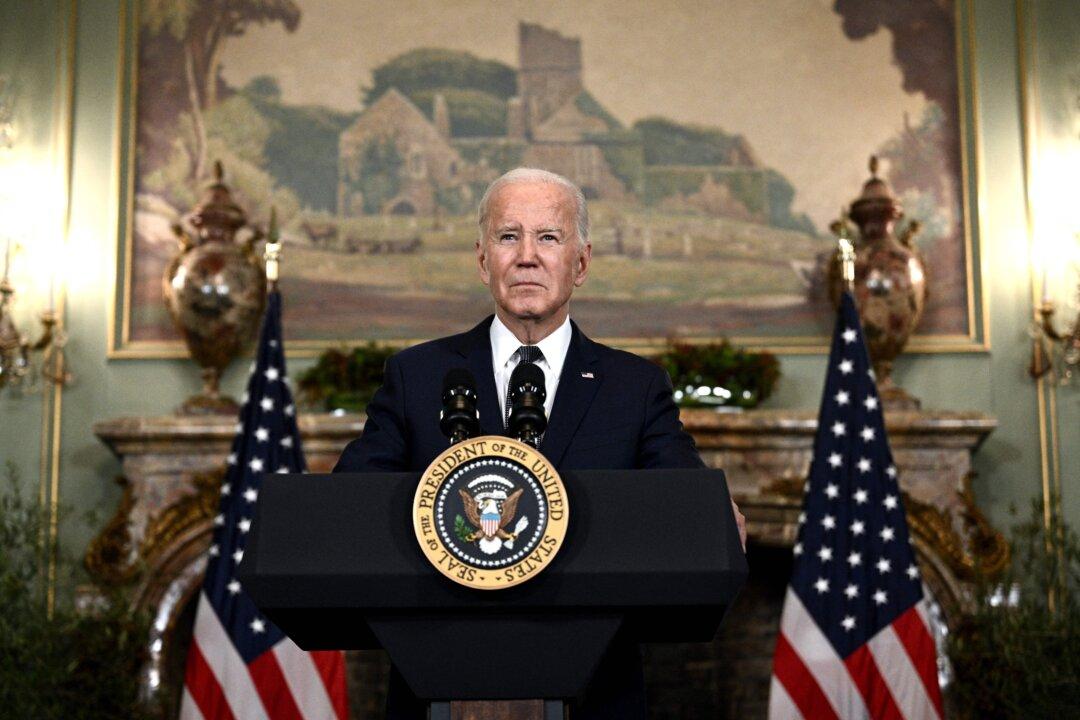News Analysis
The United States and India are threatened as the Chinese regime stands on the brink of securing a port in the Indian Ocean on pace to achieve its goal of sea control by 2030 and naval superiority by 2049.
The Chinese Communist Party (CCP) has a long history of circumventing sanctions to support the military rulers of Burma (also known as Myanmar). The stakes are made even higher by the China-Myanmar Economic Corridor (CMEC), a portion of the Belt and Road Initiative (BRI, also known as “One Belt, One Road”) that runs from China’s Yunnan Province to a Burmese port on the Indian Ocean.
CMEC will enable the People’s Liberation Army Navy (PLAN) to encroach on India in the Bay of Bengal. It will also allow CCP oil shipments to avoid the Strait of Malacca, which the U.S. Seventh Fleet patrols. While the United States and India appear to be at odds over Russia’s invasion of Ukraine, the two have a shared interest in preventing the PLAN from gaining access to the Indian Ocean.
India is caught in a balancing act between its long-term ally Russia and long-term adversary China. Over the past few years, the United States has intensified its alliance with India through the Quadrilateral Security Dialogue (the Quad) and other initiatives. Still, the Ukraine crisis is putting this budding friendship to the test.
While Beijing may seek to draw India away from the United States, New Delhi’s anger about the CCP border incursions of the past two years will not be easily forgotten. Neither is India prepared to ignore the growing threat China plays in the Bay of Bengal. Indian Prime Minister Narendra Modi even rejected a proposed meeting with China’s Foreign Minister Wang Yi last month.
Another dimension to the Indian Ocean situation is that the United States’ China containment strategy focuses on the Pacific Ocean, the Strait of Malacca, and the Taiwan Strait. In contrast, the United States has generally left the defense of the Indian Ocean to India. The U.S. Indo-Pacific Strategy paper confirms that the United States counts on India “as a partner in this positive regional vision.” However, whether or not India is up to the task remains a question mark.
The Office of U.S. Naval Intelligence estimates that by 2030, the PLAN will have 67 new major surface ships and 12 new nuclear-powered submarines, which is enough to control the Indian Ocean. The larger CCP plan is to grow the military so that China will be able to control the seas by 2030 and displace the United States as the world’s most powerful navy by 2049.
There is concern within India that CCP threats to India’s land borders, such as the 2020 incursions into the Himalayan territory, are distracting the government from building a strong navy. Apart from the fact that India is a peninsula with 4,350 miles of coastline, security experts, including Center for Strategic International Studies (CSIS), agree that India should increase its maritime capabilities. This is particularly true now that China has established ports at Gwadar in Pakistan, Hambantota and Colombo in Sri Lanka, and will soon have ports in Burma. In August 2021, China successfully tested a cargo run from Yangon Port, which is in the Indian Ocean, in Burma all of the way to Yunnan.
On Sept. 16, 2021, Voice of America reported that Rajeswari Pillai Rajagopalan, director for the Center for Security, Strategy, and Technology at New Delhi’s Observer Research Foundation, said that the ports in Burma, Pakistan, and Sri Lanka represented the CCP closing in on India.
A senior Indian naval official told the Business Standard in January that there were as many as 125 foreign vessels in the Indian Ocean at any time, the most since World War II. Speaking with reporters in December 2021, Chief of Naval Staff Adm. R. Hari said that the Indian navy might be tracking up to three PLA ships at any given moment.

Anit Mukherjee, associate professor at the S. Rajaratnam School of International Studies who authored a book on India’s military, told the Business Standard in January that in order to meet the challenge of the CCP, India needs to build up its naval power. Historically, the navy has been the “forgotten service” when it comes to India’s military funding, always receiving only a fraction of the budget it asks for.
On average, India spends 15 percent of its military budget on its navy despite only having three branches, while the United States, with six branches, spends 30 percent on the navy. The amount the CCP spends on its navy is not clear; however, China’s total defense spending of $252 billion is more than three times India’s $72.9 billion.
Finally realizing the need to catch up, the Indian government increased the navy budget by 44.53 percent this year. Currently, the Indian navy only has 130 vessels, many of which are two-decades old. So while the increase in funding is a welcomed move in the right direction, the situation is far from resolved.
The United States has a number of tools to aid India in improving its maritime defense capabilities. In 2012, the U.S.-India Defense Technology and Trade Initiative (DCIF) was established to foster cooperation between the two countries in research and develop, as well as production of defense technologies. Additionally, the United States has other programs in place to finance the military of foreign countries and provide them with defense-related equipment. Both the foreign military financing (FMF) and excess defense articles (EDA) have been applied to Egypt and Israel and could be expanded to include India.
A sticking point in U.S.-Indian cooperation has always been the United States’ refusal to provide India with nuclear submarines and other advanced weaponry, forcing India to rely on purchases from Russia. Now, in the context of the Ukraine invasion, India’s arms trade with Russia is in conflict with the Countering America’s Adversaries Through Sanctions Act. As the United States will not sell India the latest weapons, India must do without them, or maintain its ties with Russia.
Preventing the CCP from gaining control of the Indian Ocean may necessitate the United States to adopt a new Indian Ocean policy and to deepen its involvement with India through the Quad and other programs. Washington is in a position to coordinate with New Delhi by supporting the development of India’s economic, political, and military power. To do this, the United States will have to evaluate whether India’s ties to Russia outweigh the help that New Delhi can lend Washington in countering Beijing. Similarly, India will have to decide if gaining U.S. support against the CCP is worth abandoning its relationship with Russia.
Views expressed in this article are opinions of the author and do not necessarily reflect the views of The Epoch Times.






Friends Read Free